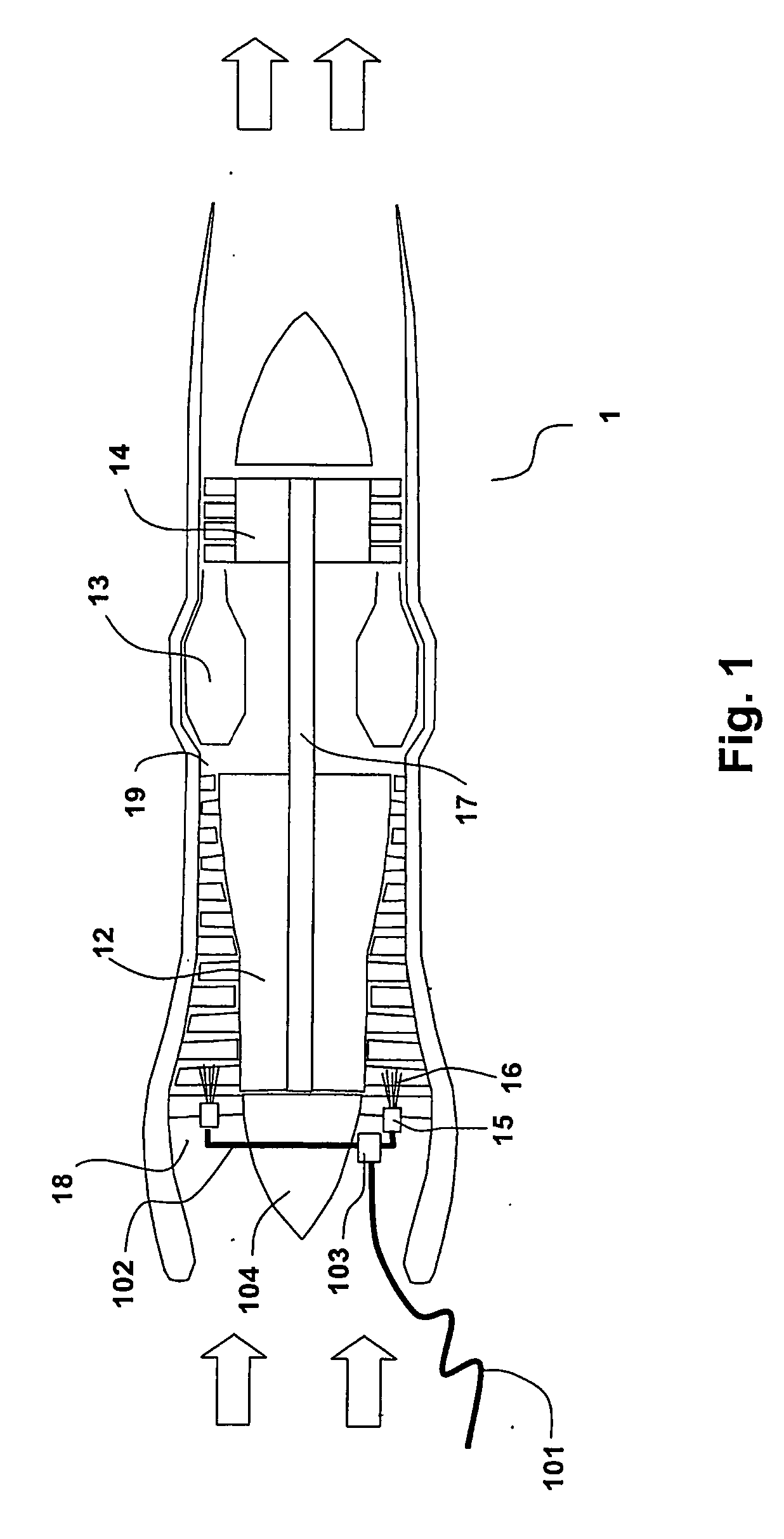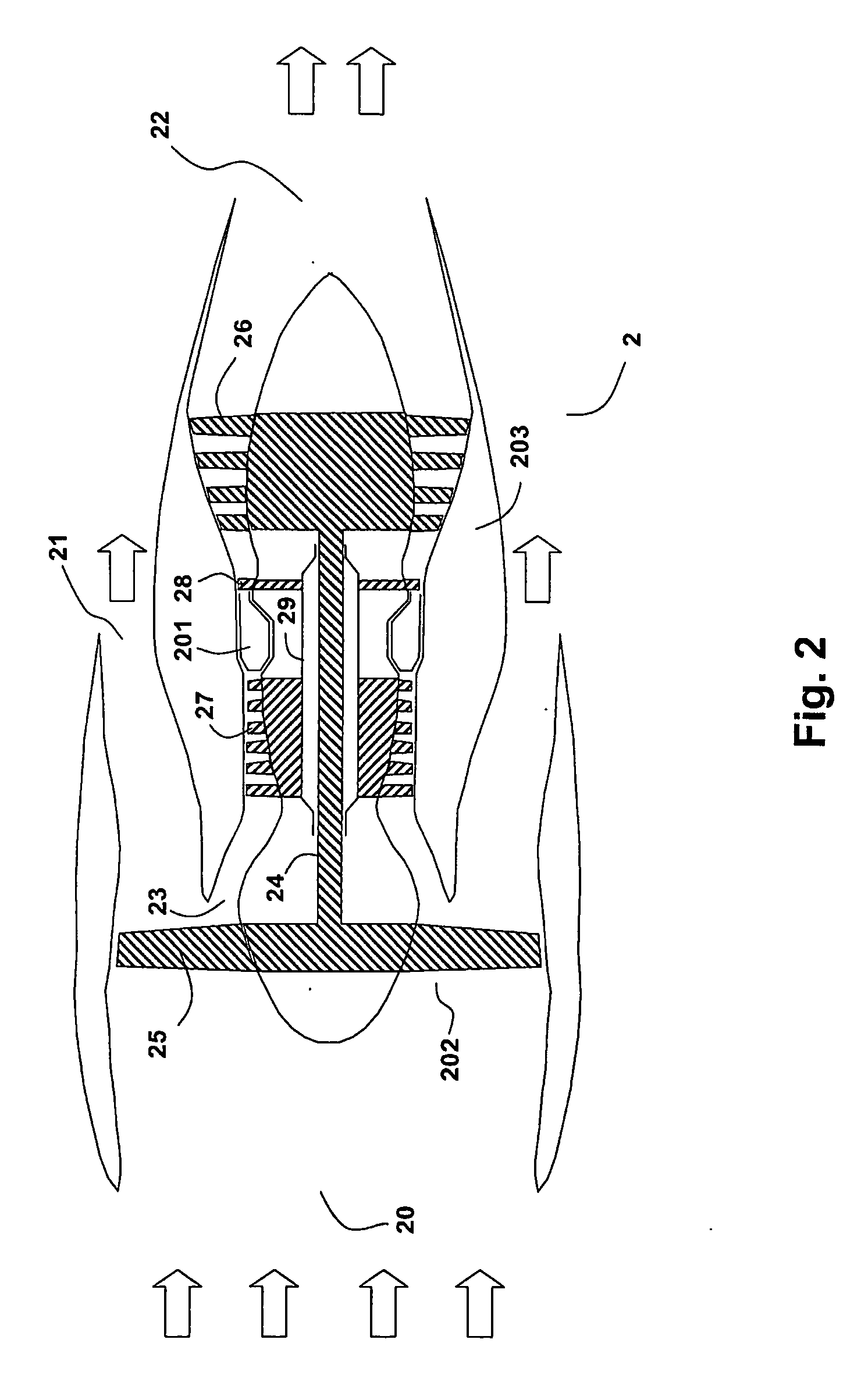Method and apparatus for cleaning a turbofan gas turbine engine
a gas turbine engine and turbofan technology, which is applied in the direction of machines/engines, liquid fuel engines, machines/engines, etc., can solve the problems of large air consumption of gas turbine engines, increased exposure to air contaminants, and gas turbines installed in aircrafts without filters, so as to reduce the negative effects of aero engine performance, reduce fuel consumption, and reduce engine life
- Summary
- Abstract
- Description
- Claims
- Application Information
AI Technical Summary
Benefits of technology
Problems solved by technology
Method used
Image
Examples
Embodiment Construction
[0042] With reference now to FIG. 2, a two shaft unmixed turbofan aero engine will be described. The two shaft unmixed turbofan engine is one of several possible designs of a turbofan engine. This invention is not limited to the embodiment of this description and its figures as it is evident that the invention can be applied to other variants of turbofan engine designs such as the mixed turbofan engine or turbofan engines with one, three or more shafts. Characteristic for the turbofan engine on which the invention is suitable for practice is that the fan and its cone for splitting the airflow is rotating.
[0043] Engine 2 in FIG. 2 comprises of a fan unit 202 and a core engine unit 203. The engine is built around a rotor shaft 24 which at its front end is connected to a fan 25 and at the rear end turbine 26. Turbine 26 drives fan 25. A second shaft 29 is in form of a coaxial to first shaft 24. Shaft 29 is connected at its front end to compressor 27 and rear end to turbine 28. Turbine...
PUM
 Login to View More
Login to View More Abstract
Description
Claims
Application Information
 Login to View More
Login to View More - R&D
- Intellectual Property
- Life Sciences
- Materials
- Tech Scout
- Unparalleled Data Quality
- Higher Quality Content
- 60% Fewer Hallucinations
Browse by: Latest US Patents, China's latest patents, Technical Efficacy Thesaurus, Application Domain, Technology Topic, Popular Technical Reports.
© 2025 PatSnap. All rights reserved.Legal|Privacy policy|Modern Slavery Act Transparency Statement|Sitemap|About US| Contact US: help@patsnap.com



